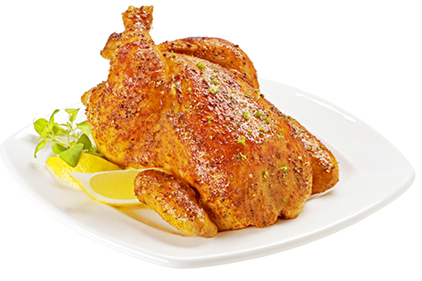Record-high feed costs during the second half of 2012 and undoubtedly at least for the first half of 2013 make any predictions about the chicken business in the new year more difficult and precarious than usual.
With market-ready live chicken costs over 50 cents per pound and ready-to-cook weight costs essentially twice that amount, the one primary question is, “How much will production have to adjust to find the sweet spot where prices rise to cover at least break-even costs?” With the unprecedented cost challenges, chicken will venture into new territory in the 2013.
Impacts on production, consumption
Factor in a continued so-so U.S. economy, and the forecast becomes even more interesting. Before 2006, when chicken consumption peaked at 88 pounds per person, there was an attitude that chicken’s very favorable value equation with consumes would help insulate chicken from the vagaries of a soft economy.
Recent years’ experience has proven that equation and attitude to be somewhat incorrect, especially at foodservice. Chicken wings maybe the exception to that general conclusion.
USDA is calling for a 1.1 percent decrease in chicken production in 2012 and for another decrease in marketings of 1.2 percent in 2013. Never in this history of the chicken industry has there been two consecutive years of decreases — that is, back-to-back negative production adjustments.
Such a situation is not just unprecedented and painful, but unnecessary if there were an appropriate federal government energy policy.
Pork production is expected to pull back 1.3 percent in 2013 while beef’s downward adjustment may be more significant, with a 4.3 percent decrease. With the decline in the combined production of beef, pork, veal and lamb, and with exports of red meat staying steady or better in 2013, per-capita consumption of red meat will be less than 102 pounds per person in the new year, the lowest consumption level since the 1930s. Combined meat and poultry consumption will be less than 200 pounds per person on average in 2013, the first time it will be below 200 pounds since 1990.
Production adjustments / price reactions
In 2009, when chicken production decreased 3.8 percent, the wholesale composite broiler price increased 6.2 percent. In 2012, with chicken production estimated by USDA to be off 1.2 percent from 2011, the composite broiler price will most likely increase an impressive 18.0 percent, according to preliminary USDA data.
If USDA’s forecast for chicken production in the new year proves correct with a 1.1 percent decrease, what can be expected for the upward change in the composite broiler price? Using the 2012 experience as a guide, is it reasonable to expect another hefty increase in the wholesale composite broiler price?
If, however, chicken production is down 3.0 percent in 2013, as certain private analysts believe, an even heftier increase in the composite broiler price may be possible. Will a double-digit percent increase in the price of chicken be enough to offset and cover record-high feed costs? Will consumers continue to make chicken their meat of choice with retail prices on a new, higher plateau?
Corn: feed or fuel?
In last year’s State of the Industry report on the chicken market in this magazine, it was stated that “without enough corn from the 2011 harvest to adequately meet all needs, animal agriculture has found itself as the last man in a somewhat short line of ‘who gets the corn.’”
Although the Corn Belt was long overdue for a significant drought, few, if any, weather forecasts were calling for the extreme dry weather conditions experienced throughout the entire major corn-growing region this past summer. In fact, the contrary seemed to be the consensus, despite an overly warm and dry winter season.
The bottom line is that the tight corn situation last year was just a modest prelude to the devastation this year. Despite the twice-in-a-century drought in 2012, the federal government policy is to continue to pursue a supposed goal of energy security at the clear risk of jeopardizing food security. Forcing corn to be used to manufacture ethanol through the Renewable Fuel Standard is another demonstration of government’s inflexibility and the difficulty of bringing common-reasoning to a crisis situation.
Governors and the livestock/poultry interests petitioned the Environmental Protection Agency to grant a waiver for the Renewable Fuel Standard for ethanol. While a very strong argument is made that the federal government should not force corn to be used for fuel when there is a severe shortage of corn, an old adage comes to mind: “You cannot wake someone who is pretending to be asleep.”
Analysts describe the ongoing cut-backs in animal agriculture as “demand destruction,” meaning that poultry and livestock numbers, including the reproductive animals, are being reduced to levels that if there is an abundant corn crop in 2013, there will not be a normal demand for corn from U.S. animal agriculture. If there is a bumper corn harvest next year, corn producers will have to count on a robust export market to provide stepped-up demand.
In addition to reduced poultry flocks and livestock herds, ethanol’s demand for corn will be maxed-out as the E10 blend wall will certainly be hit hard in 2013. Ethanol’s hope that E15 will provide stimulated demand for their product in 2013 will remain just that, “a hope.”
Concluding note
How much insight this outlook provides will depend as it always does, on a number of factors, such as feed costs/volatility; the strength of consumer demand, especially at foodservice and especially at price levels perhaps not experienced before 2013; the dynamics of the U.S. dollar and foreign consumer demand in world markets; the size of the hatchery supply flock; and a number of other significant factors unknown at this time, but in hindsight will appear much more clear — and, so clear and apparent, one will wonder how this obvious development could not have been foreseen.



Report Abusive Comment